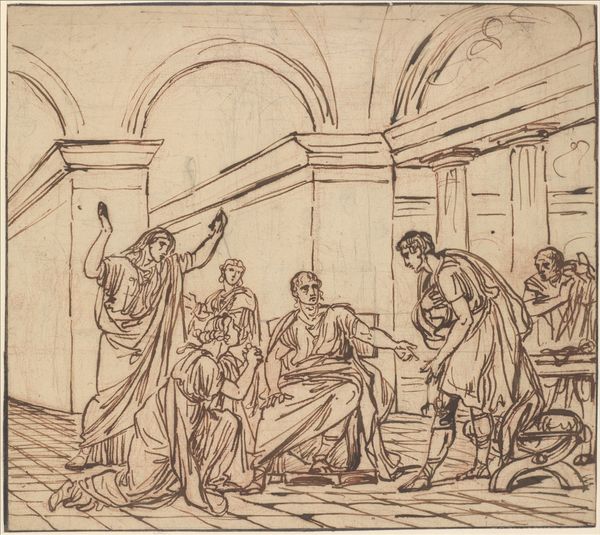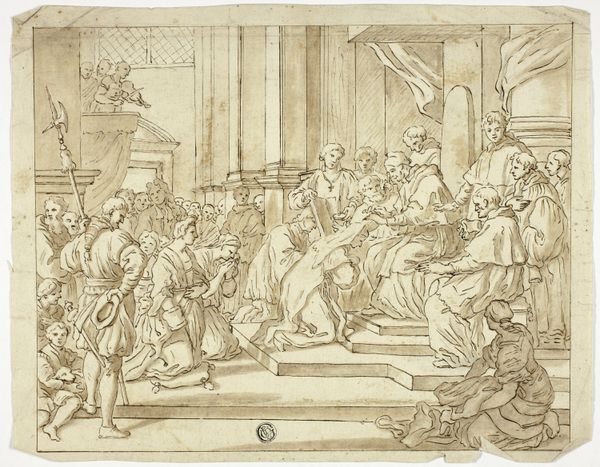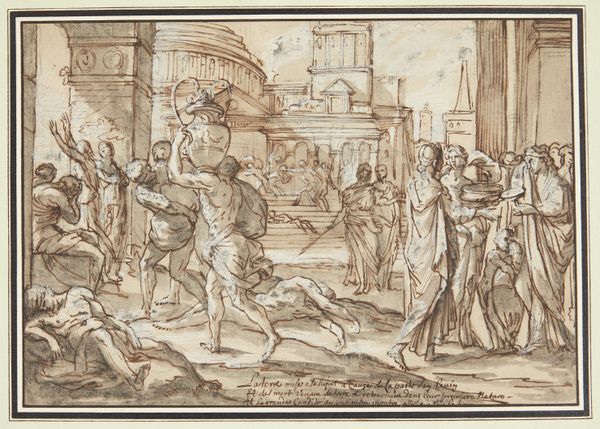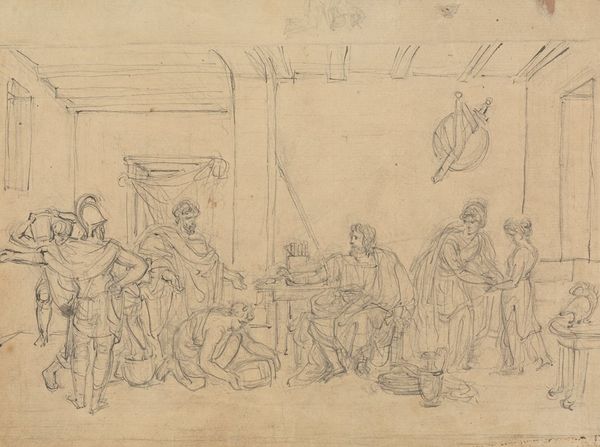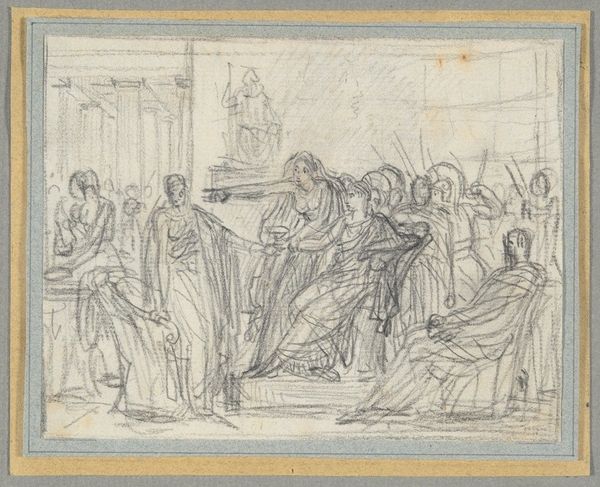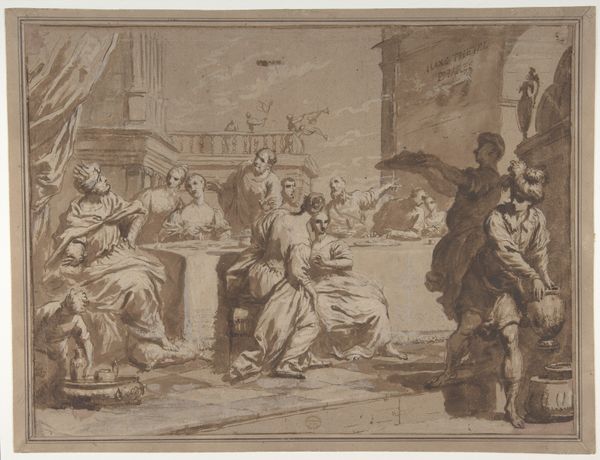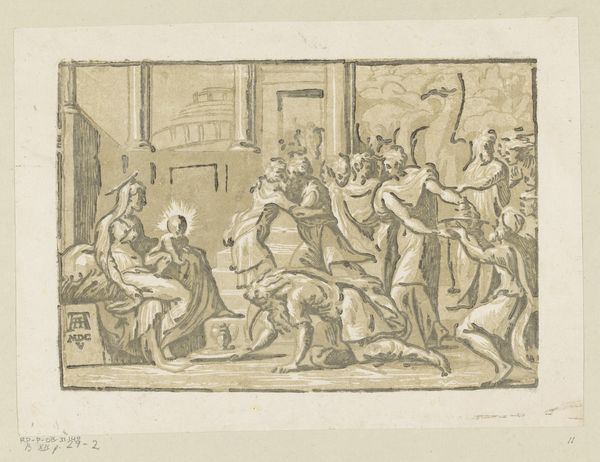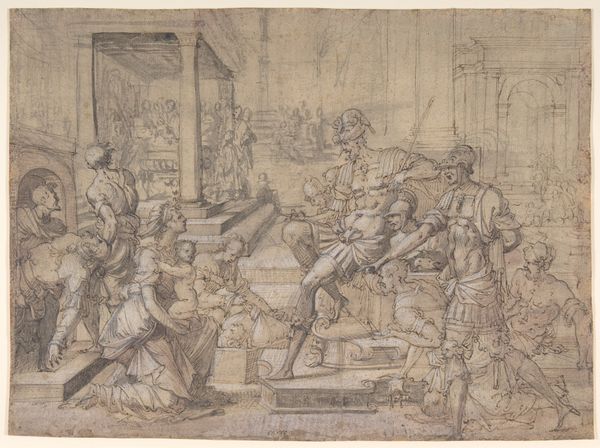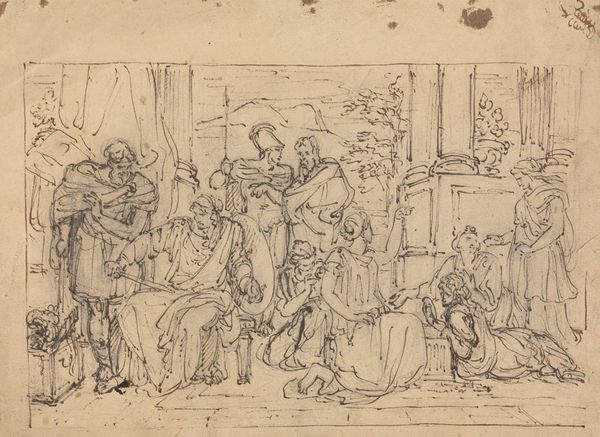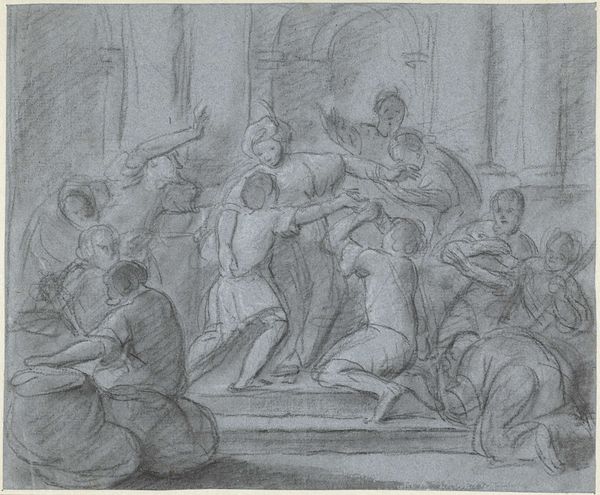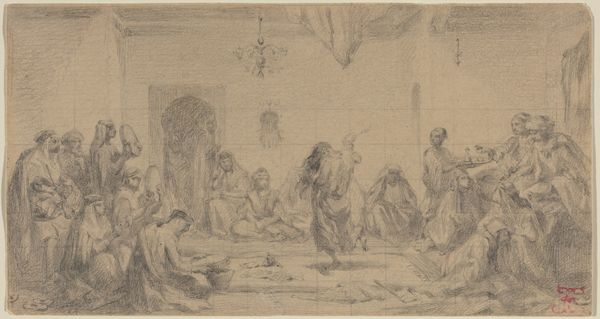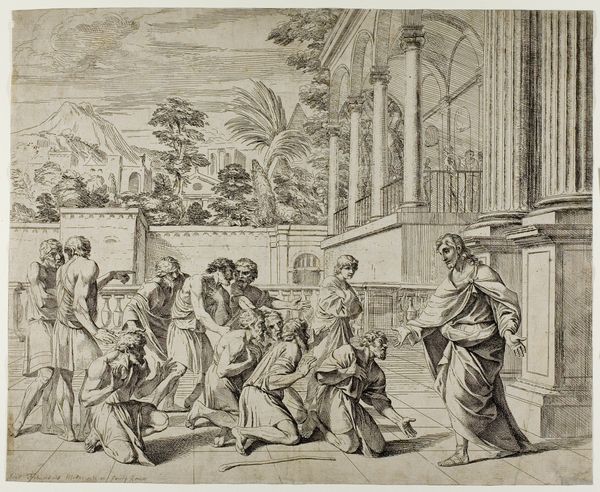
drawing, coloured-pencil
#
portrait
#
drawing
#
neoclacissism
#
coloured-pencil
#
narrative-art
#
figuration
#
coloured pencil
#
history-painting
#
academic-art
Copyright: Public Domain: Artvee
Curator: This is a preparatory drawing by Jacques-Louis David, dating back to around 1788. It's titled "Study for The Lictors Bringing Brutus the Bodies of his Sons." Made with coloured pencil, it provides insight into David's creative process before embarking on the final, monumental painting. Editor: It feels intensely tragic. The swirling figures on the right, all expressive gestures and grief, contrasted with the isolated figure in the shadows to the left… It conveys immense emotional turmoil. Curator: Absolutely. David, a key figure in the Neoclassical movement, often used historical narratives to explore moral and political themes. The story here revolves around Brutus, a Roman leader who sacrifices his own sons for the sake of the Republic. The lictors are officials, carrying in the bodies. Editor: Brutus is fascinating. The figure sitting alone... such a striking contrast to the passionate grief unfolding to the right. It highlights his inner conflict—the personal versus the political, private emotion stifled for a "greater good." You can see the influence of stoicism playing out in visual form. Curator: Precisely. The severity of the architecture and composition, echoing Roman ideals, reinforces the themes of duty and sacrifice. Note how the figures' gestures almost recall poses found in classical statuary, an element meant to highlight the continuity of the moral struggle of self-governance from Rome to the French revolution. Editor: Thinking about that stoicism, you also see how it foreshadows so many later depictions of masculine ideals during the revolutionary period—this focus on reason, on control, even when wracked with unseen grief, it becomes its own sort of spectacle. I almost wonder if there is also something subtly critical being captured. The grief of the women being shown versus his pained suppression. Curator: David’s commitment to conveying an "improved" nature can be a productively ambiguous ideal; however, it really highlights an effort to show the power of cultural memory through carefully chosen signifiers. The visual references act almost as mnemonic devices for audiences of the time, who were immersed in the symbols and visual vocabulary of virtue and civic duty. Editor: David's choices definitely highlight the very human cost inherent in political ideals, then and now. Curator: This study gives us an important opportunity to look at the cost and implications of revolutions, then and now. Editor: Indeed, making the exploration of artwork deeply valuable, since we see both then and now.
Comments
No comments
Be the first to comment and join the conversation on the ultimate creative platform.
